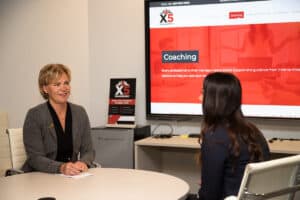Guest blog by Dennis Bridges, MBA
Last week my colleague Mike Mack and I had an interesting conversation on the video clip: “Focus on the Buyer.” The video sparked our discussion surrounding more effective ways to sell and
market to the current and future consumer.
What does this mean for marketing and the key role of our sales people? I will break it down into 3 key aspects that you may not have considered before. It’s time to take action!
- Marketing content needs to focus more on your potential consumer than your product. Consumers can generally find the product/service specifics on your website and can compare what you are offering them to what else is available. Marketing content should appeal to their emotions and highlight what is in it for them and what benefit it will bring.
- Sales people need higher business acumen than ever before as they need to focus more on “telling the buyer something he or she does not already know.” For example, share with the consumer how the product or service can be utilized in ways that may not have been previously considered. Your sales associates also need to focus on relationships. The main goal should be to connect people (and stay connected) by way of adding value to those people and the relationships.
- Sales and marketing people need to take advantage of social media. There are many avenues in social media available and selecting the right options for your business is key. For example, when your business is looking up potential employees, business partners, vendors and connections on LinkedIn – be sure that you have an active presence in that space. Do so by accumulating testimonials, endorsements and connections in order to “social proof” your business from falling behind the curve. Make sure your business (and employee) images, content and behavior on LinkedIn are relevant and adds value to your target audience.
If you take a look around your business community the majority of companies that continue to outperform their competition are (and will continue to be) the ones who can combine and align these 3 aspects to communicate more effectively with the informed buyer.
photo credit: Gary Hayes via photopin cc



